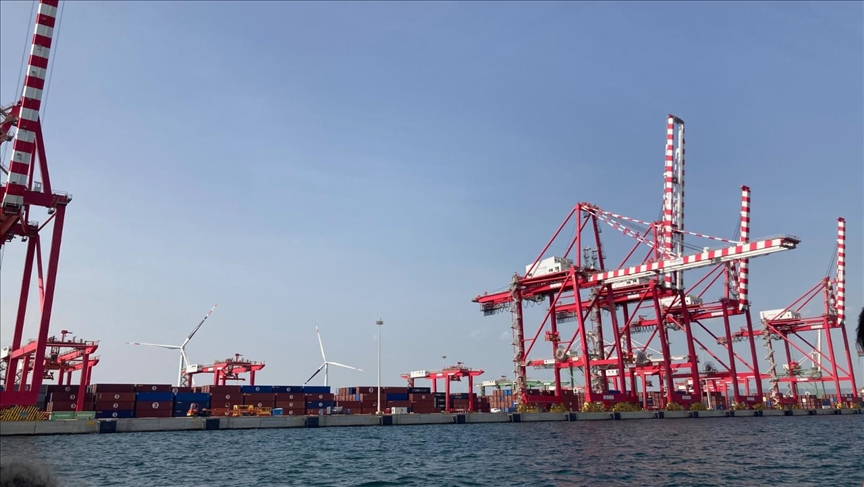
- Italy’s eight SEZs are preparing to converge into one single project starting 2024
- Ionic SEZ focusing on logistic hubs Taranto port and Grottaglie airport to attract new investors
- Opinions divided over whether single SEZ for the whole south region will boost chances of success
TARANTO, Italy
One year from their launch, Italy’s eight special economic zones (SEZ) are betting on new opportunities of growth and investment for the country’s southern regions, as they prepare to converge into one single project starting in 2024.
The SEZ program has been dubbed a “New Deal” for Italy’s south, recalling the US’ post-Great Depression recovery plan in the 1930s.
Its main targets are to attract domestic and foreign investment to boost regional productivity, ignite economic development and further integrate Italy’s south into global trade routes.
Last year, the eight zones launched their digital “one-stop-shops,” which allow investors to skip the over 30 authorizations normally required to start new industrial projects.
Cutting Italy’s notorious red tape is the first of two benefits granted to all SEZ investors. The second involves tax credits that range from 20% for small firms to 10% for large firms, up to a maximum of €100 million (over $105 million) for each project.

One of the most promising zones, the Ionic interregional SEZ, which extends to the two southern regions of Puglia and Basilicata, has been focusing on its key logistics hubs: the Taranto port and the Grottaglie airport.
In the past six months, the Ionic SEZ has received proposals for 22 projects worth over €40 million, with the creation of 250 new jobs.
“Another 40 projects are at an advanced stage, foreseeing the creation of 2,000 jobs, especially in the sectors of logistics, automotive, constructions and agri-food,” said Commissioner Floriana Gallucci, who oversaw the project for the government.
In July, European Affairs Minister Raffaele Fitto requested and obtained approval from the EU to unify the eight zones into a single SEZ, which will include all of Italy’s so-called “Mezzogiorno,” or the southern region.

According to Fitto, the single project would avoid delays and fragmentation, and allow the regions to fully capitalize on the financial opportunities offered by the National Recovery and Resilience Plan (NRRP), the post-pandemic plan linked to the Next Generation EU.
“The single SEZ is a tremendous opportunity for a relaunch of the South as the link between Northern Europe and the enlarged Mediterranean,” Gallucci told Anadolu.
At the core of the SEZ project is the Port of Taranto, which aims at exploiting its ideal geographical position to become a logistic and intermodal hub for the Asian, EU and US markets, as well as the Mediterranean and North Africa.
“Ports guarantee all the necessary services to the companies that choose to be based here to start their import-export activities, becoming key to ensure that foreign investments in logistics are effective,” said Sergio Prete, head of the Ionian Sea Port System Authority.
Turkish investors
Among the main international actors in the area, Turkish port operator Yilport holds a 49-year concession agreement to manage a multipurpose terminal at the port of Taranto.
The Taranto port began servicing the key Türkiye-Italy-Tunisia corridor in early July 2020. The Taranto-Tunisia segment forms the core link of the corridor’s Europe-to-Africa transport route, by connecting North Africa’s coast to the main manufacturing centers of Italy, Germany and northern Europe via Europe’s high-speed rail systems.
The integration between the Taranto port and the airport of Grottaglie – a center of excellence for aerospace activities – is the other essential project aimed at attracting international investors.
“The Grottaglie airport is Italy’s first spaceport and it serves as the cargo platform not only for the aeronautic sector, but also for other activities, like agriculture,” said Antonio Vasile, president of Puglia airports.

However, not everyone believes that the creation of a single SEZ for the whole southern region will boost the project’s chances of success.
“The machine had just been started and it was bearing the first results,” Mattia Giorno, Taranto’s city councilor for Infrastructure, told Anadolu.
“Moving everything to Rome, where everything notoriously stops, is like pulling the brakes on the SEZ projects. For sure, it doesn’t represent the solution.”
According to Adriano Giannola, president of Italy’s Association for the Industrial Development of the South (Svimez), extending the SEZ to all the eight regions would be successful only if based on a strong strategic plan.
Giannola noted that the unification means covering a territory that is 100 times larger than the current one, requiring additional resources and an integrated governance.
“To make this formula work, it must be attractive to many investors, who not only aim to exploit the tax credits, but also to launch in the territories a real process of development,” he said at a recent parliamentary hearing.
Anadolu Agency website contains only a portion of the news stories offered to subscribers in the AA News Broadcasting System (HAS), and in summarized form. Please contact us for subscription options.







